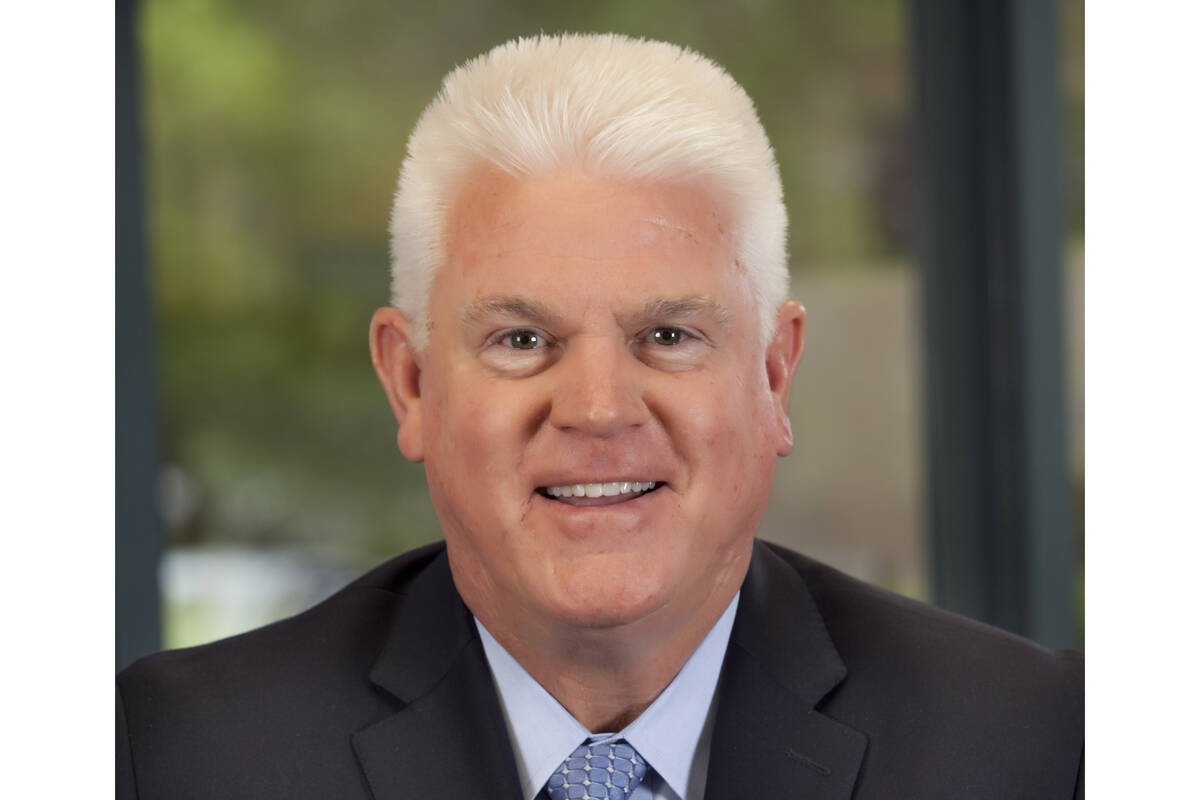As vacancy rates have increased for the industrial and office markets with reduced demand, panelists raised the specter that companies are waiting out the results of the election before making decisions on their space needs.
That was one of the highlights of a recent luncheon held by the Southern Nevada CCIM Chapter at The Orleans.
In a recent Colliers report, Southern Nevada’s industrial market added 3.8 million square feet to its inventory in the second quarter of 2024 that helped increase the vacancy rate to 6.4 percent. The vacancy rate was 1.6 percent at the end of the second quarter of 2023.
On the office side, after hitting a recent low vacancy rate in the second quarter of 2023 at 11 percent, the vacancy has increased for three consecutive quarters to 12.1 percent to start the third quarter.
The panelists for luncheon were Rod Martin, senior vice president Majestic Realty; Jeff LaPour, CEO and president of LaPour; Doug Roberts, president of national development for Panattoni Development.
“Tenant velocity has decreased in the last six to the 12 months,” Roberts said. “Once that velocity goes down, it’s a new game and the game stops. It’s not good.”
Martin called it “slow. It’s a little bit frightening. It’s a far cry from what we’ve been doing over the last couple of years. Tenant demand is way down.”
LaPour said they’ve built smaller spaces while the majority of the inventory added in the last five years has been larger industrial buildings funded by institutional capital focused on North Las Vegas.
“When demand is good, there’s very little differential between the buildings and where you’re located,” LaPour said. “If demand is strong, it’s going to find you. It’s only a matter of time with all the capital before supply outpaced demand, which I think is happening now. The last quarter was abysmal with a half-million square feet (absorbed for industrial space). I don’t recall ever seeing that. We had such a heated cycle the last time, but people were disappointed if they didn’t have six or seven offers on the same space.”
Roberts said he continues to be bullish on the industry because the pandemic taught people when it comes to the supply chain, you can’t count on what comes from overseas.
“Why (are) pharmaceuticals made outside the country,” Roberts asked. “(How) does that make any sense? Our chip manufacturing is coming back with government incentives. What does that mean for industrial space? Yes, California helps us every single day. They are doing everything they can to drive business out of state. Long term, we’re good. Short term, we’re not.”
The panel said they expect there will be offers of free rents and incentives on tenant improvements to attract customers into their properties.
Rick Myers, a partner with Tauras Commercial Real Estate, moderated the panel and brought up what he said was “one of the elephants in the room” about demand being down because it’s a presidential election year and what needs to happen for that to change.
“What do you think the upcoming election is doing to decision making,” Myers asked? “Is it a factor or not?” Some of the panelists said they are hearing that from tenants.
Myers said he’s talking to office brokers who told him there’s “tapping of the breaks until the end of the election so at least you know.”
LaPour suggested there might be a “physiological barrier” in the marketplace because you can’t go anywhere without people wanting to talk about politics and how horrible both sides are.
“I’m sure there’s something there,” LaPour said. “Unless you have a gun in your ear, you can lay low until January.” Martin said developers worry about everything and cited how they have 150 tenants in their portfolio in Las Vegas, and it’s something he wonders about.
Roberts said common sense tells him that an impact from the election on demand “is bound to happen” because the Federal Reserve has been facing inflation and low unemployment. In order to drive inflation down, people have to lose jobs, he added.
“That’s a horrible reality but that’s how you reduce spending,” Roberts said. “Unemployment is going to start trickling up. You can do attrition first and then layoffs. I don’t know if we’re going to go into a recession or not but the higher interest rates are causing angst within the system, and manufacturing will be impacted by that. It naturally leads to tenant demand going down because people are going to say what can I do with what I have and why do I need to grow or move.”
Myers then referred to “interest rates are the other elephant in the room” as people watch the Fed and wait for interest rates to be cut this fall.
“We hang on (Federal Reserve Chair) Jerome Powell’s every word,” Myers said. “Is he going to make cuts? He came out in the last few days saying the time has come, meaning he’s going to start cutting rates.”
If the Fed does four quarter-point reductions, Myers asked if that would change anything in the industry with demand.
“Yes and no,” Roberts said. “We live and die by the 10-year Treasury (notes). It’s still hovering around four. A 100 basis point spread in what the Fed doesn’t always correlate to the Treasury. It might make a difference in some inflation rates.”
Myers said a lot of real estate is tied to 10-year Treasury notes that fund the government by selling bonds. Even if the Fed cuts rates, it doesn’t mean the 10-year notes will move. The federal funds rate, meanwhile, that the Fed charges banks applies to borrowing for construction, he said.
“What would you invest in real estate at 3 percent if you can invest in government securities with 100 percent security at 5 percent,” Myers said.
Martin said interest rates are only one component he’s interested in. Loan sizing is important because whatever they can’t receive in debt they need to come up with equity.
“I’d rather not reach in our pockets if that can be avoided,” Martin said.
Myers pointed out that at one time lenders provided 100 percent of loan to cost but when the cycle turned they may only give 60 percent. Not everyone has that 40 percent of equity.
“Not only the interest rate on the loan but the sizing of the loan to value is important,” Myers said.










